- Region
- Águilas
- Alhama de Murcia
- Jumilla
- Lorca
- Los Alcázares
- Mazarrón
- San Javier
-
ALL AREAS & TOWNS
- AREAS
- SOUTH WEST
- MAR MENOR
- MURCIA CITY & CENTRAL
- NORTH & NORTH WEST
- TOWNS
- Abanilla
- Abarán
- Aguilas
- Alamillo
- Alcantarilla
- Aledo
- Alhama de Murcia
- Archena
- Balsicas
- Blanca
- Bolnuevo
- Bullas
- Cañadas del Romero
- Cabo de Palos
- Calasparra
- Camping Bolnuevo
- Campo De Ricote
- Camposol
- Canada De La Lena
- Caravaca de la Cruz
- Cartagena
- Cehegin
- Ceuti
- Cieza
- Condado de Alhama
- Corvera
- Costa Cálida
- Cuevas De Almanzora
- Cuevas de Reyllo
- El Carmoli
- El Mojon
- El Molino (Puerto Lumbreras)
- El Pareton / Cantareros
- El Raso
- El Valle Golf Resort
- Fortuna
- Fuente Alamo
- Hacienda del Alamo Golf Resort
- Hacienda Riquelme Golf Resort
- Isla Plana
- Islas Menores & Mar de Cristal
- Jumilla
- La Azohia
- La Charca
- La Manga Club
- La Manga del Mar Menor
- La Pinilla
- La Puebla
- La Torre
- La Torre Golf Resort
- La Unión
- Las Palas
- Las Ramblas
- Las Ramblas Golf
- Las Torres de Cotillas
- Leiva
- Librilla
- Lo Pagan
- Lo Santiago
- Lorca
- Lorquí
- Los Alcázares
- Los Balcones
- Los Belones
- Los Canovas
- Los Nietos
- Los Perez (Tallante)
- Los Urrutias
- Los Ventorrillos
- Mar De Cristal
- Mar Menor
- Mar Menor Golf Resort
- Mazarrón
- Mazarrón Country Club
- Molina de Segura
- Moratalla
- Mula
- Murcia City
- Murcia Property
- Pareton
- Peraleja Golf Resort
- Perin
- Pilar de la Horadada
- Pinar de Campoverde
- Pinoso
- Playa Honda
- Playa Honda / Playa Paraíso
- Pliego
- Portmán
- Pozo Estrecho
- Puerto de Mazarrón
- Puerto Lumbreras
- Puntas De Calnegre
- Region of Murcia
- Ricote
- Roda Golf Resort
- Roldan
- Roldan and Lo Ferro
- San Javier
- San Pedro del Pinatar
- Santiago de la Ribera
- Sierra Espuña
- Sucina
- Tallante
- Terrazas de la Torre Golf Resort
- Torre Pacheco
- Totana
- What's On Weekly Bulletin
- Yecla


- EDITIONS:
 Spanish News Today
Spanish News Today
 Alicante Today
Alicante Today
 Andalucia Today
Andalucia Today
History of Torre Pacheco
Torre Pacheco, from Neanderthals to the 21st century
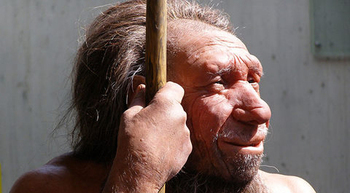 The history of Torre Pacheco is defined by its geographical constitution, being a vast, flat area with rich soils, devoid of any natural rivers or springs, and offering little in the way of defensive Sierras which could give protection against aggression or attack, it´s only major strategic outlook being from the Cabezo Gordo.
The history of Torre Pacheco is defined by its geographical constitution, being a vast, flat area with rich soils, devoid of any natural rivers or springs, and offering little in the way of defensive Sierras which could give protection against aggression or attack, it´s only major strategic outlook being from the Cabezo Gordo.
For this reason, the habitation of Torre Pacheco has been sporadic, the lack of natural defense meaning there are long periods of time-scale with no traceable signs of habitation, or the major cultures around which many other established towns are constructed, ancient settlers avoiding the open spaces, and choosing strategically advantageous locations and natural water sources instead.
La Sima de Las Palomas, Cabezo Gordo
However, the Sima de las Palomas in the Cabezo Gordo is the major exception, and provides Torre Pacheco with one of the most important archaeological sites in Europe.
The archaeological site of “La Sima de las Palomas” was discovered in 1991.
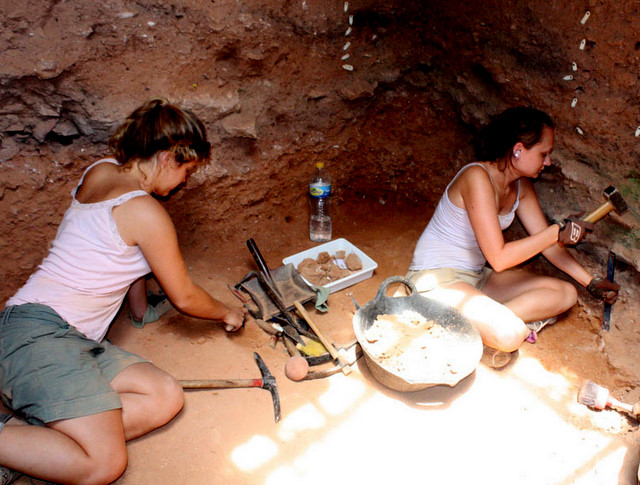 The Cabezo Gordo rises up from the plains of the Campo de Cartagena and is a vast dolomite of rock, rich in marble and minerals, it´s peak reaching 312 metres above sea level.
The Cabezo Gordo rises up from the plains of the Campo de Cartagena and is a vast dolomite of rock, rich in marble and minerals, it´s peak reaching 312 metres above sea level.
The site of the Sima de las Palomas consists of a vertical hole in the rocky mass of Cabezo Gordo, which was widened by the mining activities of those in search of magnetite in the area at the end of the 19th century. The vertical nature of the 18-metre pothole makes the archaeological dig a difficult operation, but the site is of major importance, providing compelling evidence of the first known inhabitants of this Mar Menor area; the Neanderthals.
More than 120 bones and teeth have been discovered, dating from between 150,000 and 35,000 BC (in other words, the Upper and Middle Pleistocene Epoch). Evidence indicates that these bones must have belonged to at least nine different skeletons, and palaentologists believe that they have virtually complete skeletons here of at least three individuals who appear to have been buried beneath a significant quantity of debris, one of which is a female with a complete pelvis, giving invaluable data about the weight, height and anatomy of the Neanderthals. Whether this was an intentional or accidental enterment is not clear, but skeletons in a state of anatomical connection, meaning nearly complete, a tantalisingly rare occurrence when dealing with Neanderthal remains, as not only are Neanderthal sites few and far between, but flesh was scavenged by animals and Neanderthals are not known to have enterred their dead.
(Click, There could be a little of the Neanderthal in all of us.)
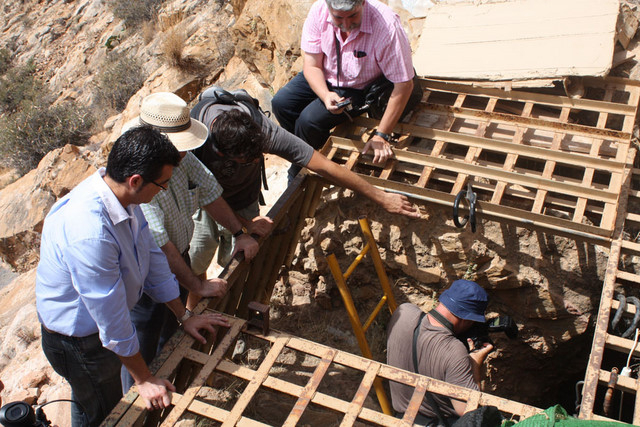 La Sima de las Palomas holds the remains of two types of pre-human being, Homo Heidelbergensis, and Homo Sapiens Neanderthalensis. Homo Heidelbergensis was a pre-Neanderthal species, and remains of this species date from between 150,000 and 125,000 years ago, whereas the Homo Sapiens Neanderthalensis (or Neanderthal Man) remains found are between 120,000 and 35,000 years old.
La Sima de las Palomas holds the remains of two types of pre-human being, Homo Heidelbergensis, and Homo Sapiens Neanderthalensis. Homo Heidelbergensis was a pre-Neanderthal species, and remains of this species date from between 150,000 and 125,000 years ago, whereas the Homo Sapiens Neanderthalensis (or Neanderthal Man) remains found are between 120,000 and 35,000 years old.
The known facts about Neanderthal Man are surrounded by unanswered questions: we don’t even know why the species disappeared, whether their apparently limited capacity to breed forced them into extinction, whether our appearance wiped them out, or if they interbred with ourselves and ceased to exist as a definable population.
They were, however, considerably more intelligent than we give them credit for, lighting fires, to keep themselves warm and scare off animal predators, and making tools from flint, quartz and hard limestone.
The fauna found at the site is varied, including species normally associated with both warm and cold climates, which seems to suggest that there was pre-human settlement here for thousands of years. Among the fossils found there is evidence of the existence of pre-historic elephants, hippopotamus, wild asses and horses, giant and normal deer, fallow and roe deer, aurochs, goats, panthers, small carnivores such as foxes and lynx, hares (often burnt), bats, insectivores, small rodents, possible marine mammals, various birds and fragments of eggshells, turtles and tortoises (often burnt), small reptiles and continental marine molluscs (gastropods). To judge from the remains found in the Sima de las Palomas, the diet of the settlers was varied, as well as actively hunting they were also gatherers of smaller animals (tortoises and snails) and fruit.
The Romans in Torre Pacheco
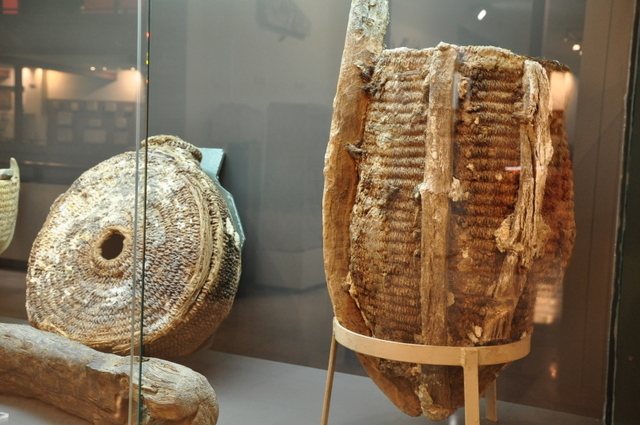 There then follows a gap of around 35,000 years before the next evidence emerges of habitation in Torre Pacheco, the Romans leaving behind traces of their habitation in the form of several villa sites.
There then follows a gap of around 35,000 years before the next evidence emerges of habitation in Torre Pacheco, the Romans leaving behind traces of their habitation in the form of several villa sites.
The Romans invaded Cartagena in 209 BC, the city at that point occupied by the Carthaginians under the command of General Hannibal, who had left the City vulnerable when he set off on his ill-fated journey across the Alps to attack Rome by land. ( Click History of Cartagena).
Torre Pacheco is in the heart of an area which in Roman times was known as the Campus Spartarius (Campo de Esparto grass), which was essentially the modern-day Campo de Cartagena, an area used for farming to provide food for both the City of Cartagena, for export and to feed the slaves working in the mines of the Sierra Minera in what is now La Unión.( Click History of La Unión).
No evidence exists of a Roman town on the site of Torre Pacheco, although there are traces of Roman villas in the area of Torre Pacheco, including those at Rincón del Canal (near the village of Cayetano), la Casa Grande de Santa Cruz (El Jimenado), la Casa de la Balsa (El Jimenado) and Las Barracas. They must have been scattered along the route of a secondary Roman road, not far from the road between Cartagena and the Segura Valleyarea of Murcia, and at these sites both architectural and ceramic remains have been found, including “terra sigillata”, a material used to line water deposits, make floors and plaster walls.
The Vía Augusta trade route ran from Cadíz right along the Mediterranean coastline, through southern France to Italy, and products produced in this area were shipped out along the coastline via Cartagena .
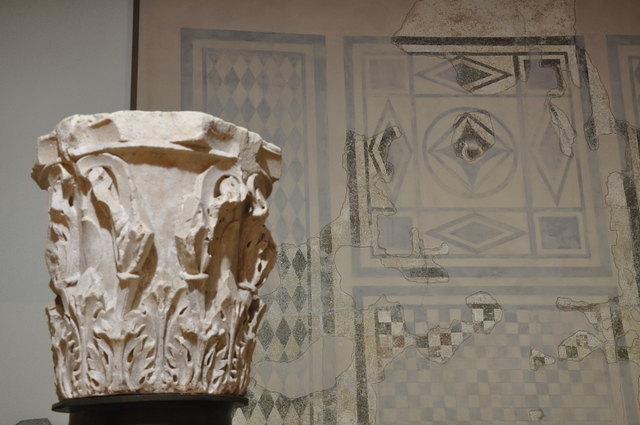 During the Roman occupation of the peninsula, marble from the quarries of Cabezo Gordo was used in constructions in the city of Cartago Nova (Cartagena). This marble was used mainly for decorative elements (pillars and inscriptions) for a long period, from the 2nd century BC until the Byzantine occupation in the 6th century.
During the Roman occupation of the peninsula, marble from the quarries of Cabezo Gordo was used in constructions in the city of Cartago Nova (Cartagena). This marble was used mainly for decorative elements (pillars and inscriptions) for a long period, from the 2nd century BC until the Byzantine occupation in the 6th century.
After this, there is again a large gap of several hundred years, as although the area could have been inhabited from the 8th to 13th centuries during the period when the Arabs occupied southern Spain, lack of natural and obvious water sources, and lack of strategic shelter, would have made other areas more advantageous for settlement than Torre Pacheco. Although there were undoubtedly Moorish families farming in the area, there are no recorded settlements .
The “Reconquista” of Torre Pacheco
The Moors dominated the Iberian peninsula from 713 AD until the middle of the 13th century, when the Almohad Dynasty pulled back many of its troops to fight a succession war in Morocco, leaving the south of Spain open to invasion by the Catholic Kingdoms of Castile and Aragon.
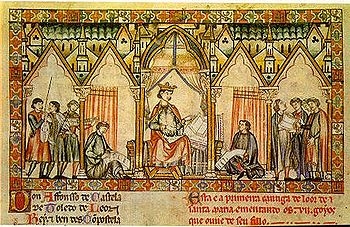 During a period of twenty years, these two Kingdoms re-took territories occupied by the Moors, slowly pushing south, until the Moors were effectively confined to the Kingdom of Granada. As part of this slow capitulation to the Catholic forces of the Reconquist, Murcia became absorbed following a treaty in 1243 which ceded control of the Murcia area to the forces of King Fernando III of Castile, and his son, Prince Alfonso, who later became Alfonso X, El Sabio.
During a period of twenty years, these two Kingdoms re-took territories occupied by the Moors, slowly pushing south, until the Moors were effectively confined to the Kingdom of Granada. As part of this slow capitulation to the Catholic forces of the Reconquist, Murcia became absorbed following a treaty in 1243 which ceded control of the Murcia area to the forces of King Fernando III of Castile, and his son, Prince Alfonso, who later became Alfonso X, El Sabio.
Cartagena held out for 2 more years, then fell in 1245. Alfonso inherited the throne in 1252.
The first documented historical references to Torre Pacheco come from this period, when King Alfonso X “El Sabio” ordered that the flocks and herds of Murcia should graze in the north of the Campo de Cartagena, which fell under the jurisdiction of the Concejo (Town Council) of Murcia. Unlike the “huerta” around the city of Murcia, the Campo de Cartagena was sparsely populated at the time, and lacked natural resources: for this reason its main use was as pasture.
The initial treaty signed in 1243 had acknowledged that most of the population of the Murcia area were Moorish farmers, and had agreed to respect their rights and religion, leaving a Moorish administrator in place to collect taxes and oversee the area.
They were no longer the owners of the land, but they were still the ones who knew most about how to irrigate and make it profitable. Gradually, though, poverty and insecurity led to the de-population of the Campo de Cartagena: the Mudéjars disappeared, and the Christians replacing them were few and far between.
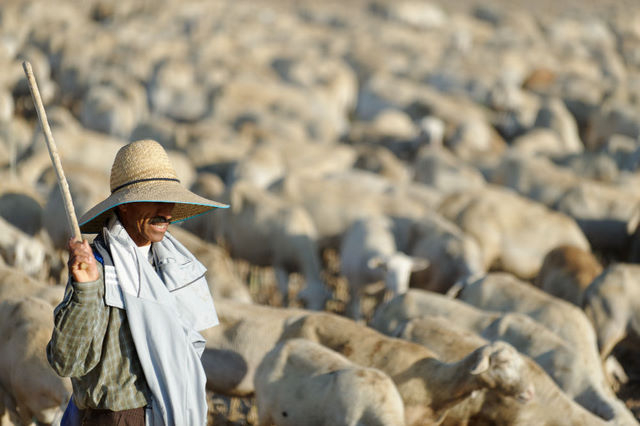 In 1264, rebellion broke out, and for two years the forces of Alfonso´s Father-in-law, Jaime I if Aragon, were required to subdue the rebellion. With Jaime came his Knights and followers, Knights who would become landowners in the area as a reward for their services in the years to follow.
In 1264, rebellion broke out, and for two years the forces of Alfonso´s Father-in-law, Jaime I if Aragon, were required to subdue the rebellion. With Jaime came his Knights and followers, Knights who would become landowners in the area as a reward for their services in the years to follow.
Alfonso died in 1284, succeeded by his son Sancho IV, and In 1292 he decreed that in the area of Los Alcázares the shepherds should pay half of their tithes to the prelate of Cartagena, the tax being payable per head of sheep. During the Middle Ages the most prosperous sector of the economy in the kingdom of Murcia was livestock farming. This was partly due to the sparse population of the territory, where people were insecure in the open countryside and there was therefore very little farmed land (only around towns and cities was there extensive agriculture). Sheep and goats were most common, since they required little effort to look after, and there was significant transhumance activity between the kingdom of Murcia and the plains of La Mancha. Many herds and flocks spent the winter in the Campo de Cartagena, returning to higher, greener ground in the summer months.
The founding of Torre Pacheco
 In the Later Middle Ages the area began to be repopulated by various landowners, whose surnames give their names to some of the towns which now appear on our 20th-century maps. Among these immigrants were the Saavedra family from Galicia, who arrived in 1330, the Roda family from Navarra (1374) and the Pacheco family from Portugal (1472). On 7th November 1478 the Concejo de Murcia donated the land by means of an official letter to Pedro Pacheco, the founder of Torre Pacheco, and it was around the tower and the house he built that the town grew.
In the Later Middle Ages the area began to be repopulated by various landowners, whose surnames give their names to some of the towns which now appear on our 20th-century maps. Among these immigrants were the Saavedra family from Galicia, who arrived in 1330, the Roda family from Navarra (1374) and the Pacheco family from Portugal (1472). On 7th November 1478 the Concejo de Murcia donated the land by means of an official letter to Pedro Pacheco, the founder of Torre Pacheco, and it was around the tower and the house he built that the town grew.
Most of the incoming families built substantial farmhouses on the land they acquired, fortified structures with watchtowers
Following the expulsion of the Moors from Granada, the coastline of Murcia was prone to attack by Berber pirates, and these ranged inland stealing crops, livestock and taking the population hostage, those who had a value could be ransomed, the rest sold in the slave markets of Africa. In times of attack their only shelter lay in the towers, since the area lacked natural strategic defences. The towers also afforded a simple communications network: in times of danger fires were lit on top of them, making them warning beacons to the rest of the population.
Evidence of this remains in the names of Torre Pacheco, Torre María and Los Torreles.
These raids are rather poetically commemorated each year in the Berber Fiestas which take place each spring, the townspeople parading in "Moors and Christians" costumes and enjoying a week of fun and partying.
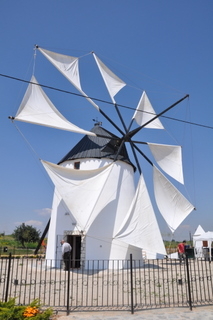 Towards the middle of the 16th century the population of the Campo de Cartagena started to increase, and this continued well into the 17th century as new noble families and farm workers arrived, increasing the number of working farmsteads. At this time the first real towns in the area were established, including Los Alcázares, Fuente Álamo and Torre Pacheco. This was the first time there had been any significant groupings of buildings and human inhabitants in the Campo de Cartagena: previously the only model of population was the isolated house or farmhouse.
Towards the middle of the 16th century the population of the Campo de Cartagena started to increase, and this continued well into the 17th century as new noble families and farm workers arrived, increasing the number of working farmsteads. At this time the first real towns in the area were established, including Los Alcázares, Fuente Álamo and Torre Pacheco. This was the first time there had been any significant groupings of buildings and human inhabitants in the Campo de Cartagena: previously the only model of population was the isolated house or farmhouse.
Growth of Torre Pacheco
During the 16th, 17th and 18th centuries various other villages and hamlets began to grow, such as Balsicas, Roldán, Dolores and Lo Ferro, this last one named after a family from Genoa who settled in Murcia and acquired the land on which the town grew.
In the 17th century new churches were built, giving their names to the modern-day villages of San Cayetano and Dolores, for example. The church in Torre Pacheco, which certainly existed already in the 16th century, became the parish church in 1603, thanks to the initiative of Luis Pacheco de Arróniz, the dean of Murcia cathedral and chaplain to King Felipe III. The church was dedicated to Nuestra Señora del Rosario, and in 1704 the church tower was added. This church was knocked down in 1971 and replaced by the current church.
The Marquis of Torre Pacheco
On 23rd March 1692 a royal decree conferred the title of Marquis of Torre Pacheco on Don Macías Fontes de Albornoz y Carrillo, governor of the city of Murcia and Knight of the Order of Santiago. (Click Order of Santiago) The family owned the Torre Saavedra as well as the estates of Fontes and Valderas.
The Concejo ruled in the Campo de Cartagena through a series of deputies, or delegates, whose job was to represent the municipal authorities in the different villages and hamlets. In 1712 Torre Pacheco had two deputies, Juan del Baño and Francisco Costa. According the Aranda census in 1768 there were 3,642 inhabitants in Torre Pacheco and the surrounding countryside, and by 1785 the town was directly dependant on the King, with its own Mayor.
Torre Pacheco still depended entirely on agriculture for its income, livestock farming continuing to be important.
Torre Pacheco gains its independence
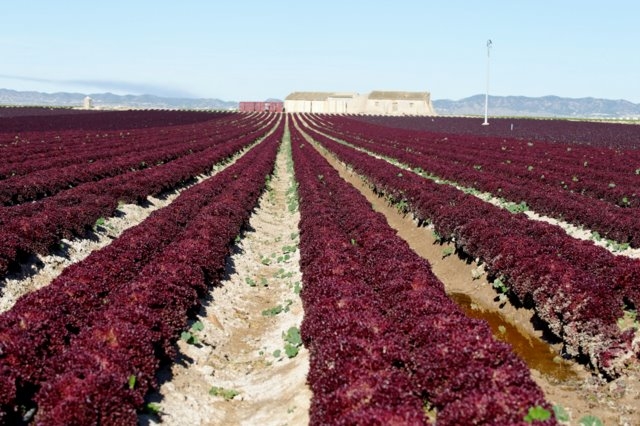 In 1813 Torre Pacheco became independent from Murcia for the first time, taking advantage of the new Constitution which was approved in 1812 but repealed in 1814 by Fernando VII. During the three years of Liberal government (1820-1823) Torre Pacheco, one of the most heavily populated and prosperous deputations in the countryside of Murcia, was again declared independent, and finally on 17th September 1836 the Town Hall was officially inaugurated. The first Mayor was Mariano Iniesta.
In 1813 Torre Pacheco became independent from Murcia for the first time, taking advantage of the new Constitution which was approved in 1812 but repealed in 1814 by Fernando VII. During the three years of Liberal government (1820-1823) Torre Pacheco, one of the most heavily populated and prosperous deputations in the countryside of Murcia, was again declared independent, and finally on 17th September 1836 the Town Hall was officially inaugurated. The first Mayor was Mariano Iniesta.
There is documented evidence of the existence of windmills in the area of Torre Pacheco dating from 1755, but it was in the 19th century that they became a defining feature of the countryside, some used for making flour from the wheat grown in the fields, while the purpose of others was to raise water, which was still a scarce and precious resource at the time, from underground sources or wells. Today there are still fourteen of them in the municipality, including the Molino del Pasico, the Molina de la Viuda, the Molino del Tío Pacorro and the Molino de la Hortichuela.
Each year Torre Pacheco holds a day honouring its millers and there is also a Romería between the windmills.
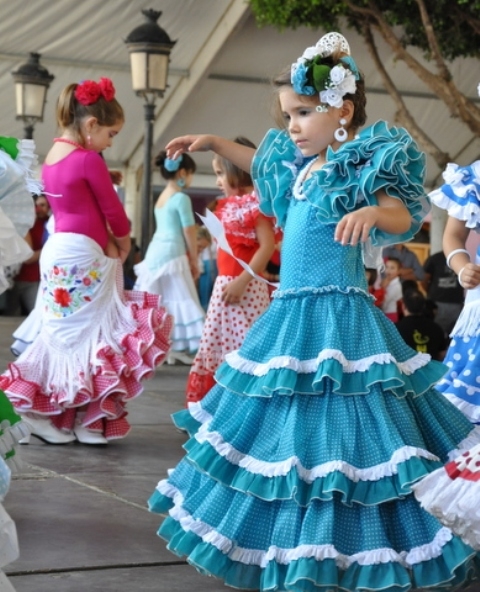 Torre Pacheco in the 20th century
Torre Pacheco in the 20th century
In 1900 there were 8,549 inhabitants in Torre Pacheco, and the population had risen only slightly to 10,409 by 1950. For most of this period there was little chance of employment for workers in the town, and arid farming (cereal crops, almonds, vines and olives) was practically the only economic activity.
In 1979 the water supply was guaranteed by the completion of the Tajo-Segura canal, revolutionizing the economy and countryside of Torre Pacheco and the rest of the Campo de Cartagena as thousands of hectares of dry land became irrigable.
This enabled farmers to grow a whole new variety of crops, taking advantage of the warm climate in Murcia to add irrigated crops such as melons, tomatoes and peppers.
In 1984 the municipality of Los Alcázares was separated from Torre Pacheco and San Javier, the last new municipality to be constituted in the Region of Murcia.
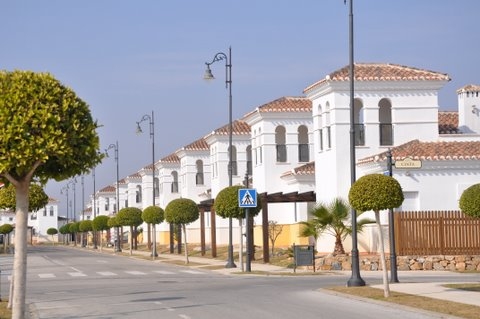 These days the advent of modern technology and the influx of a mostly foreign workforce are the driving forces behind the economy of Torre Pacheco. Among the crops grown are artichokes, lettuce, broccoli, melons and water melons, and on the back of this agricultural prosperity the town has grown and modernized exponentially.
These days the advent of modern technology and the influx of a mostly foreign workforce are the driving forces behind the economy of Torre Pacheco. Among the crops grown are artichokes, lettuce, broccoli, melons and water melons, and on the back of this agricultural prosperity the town has grown and modernized exponentially.
Torre Pacheco has also been the municipality which has benefited most from the residential tourism boom, and is the location of several of the Polaris World residential urbanisations and golf courses, with a largely International population, bringing a whole new services industry wealth to the municipality.
The Festival de Cante Flamenco de Lo Ferro was first held in 1980, and is now one of the most prestigious flamenco festivals in the country. At the same time the Institución Ferial Villa de Torre Pacheco (IFEPA) has been host to many national and international trade fairs, and is one of the best equipped for this kind of event in the Region of Murcia. Such has been its growth, that at the beginning of the 21st century, the population of Torre Pacheco has now reached more than 32,000.
article_detail
Cartagena
El Carmoli
Islas Menores and Mar de Cristal
La Manga Club
La Manga del Mar Menor
La Puebla
La Torre Golf Resort
La Union
Los Alcazares
Los Belones
Los Nietos
Los Urrutias
Mar Menor Golf Resort
Pilar de la Horadada
Playa Honda / Playa Paraiso
Portman
Roldan and Lo Ferro
San Javier
San Pedro del Pinatar
Santa Rosalia Lake and Life resort
Terrazas de la Torre Golf Resort
Torre Pacheco
Aledo
Alhama de Murcia
Bolnuevo
Camposol
Condado de Alhama
Fuente Alamo
Hacienda del Alamo Golf Resort
Lorca
Mazarron
Puerto de Mazarron
Puerto Lumbreras
Sierra Espuna
Totana
Abaran
Alcantarilla
Archena
Blanca
Corvera
El Valle Golf Resort
Hacienda Riquelme Golf Resort
Lorqui
Molina de Segura
Mosa Trajectum
Murcia City
Peraleja Golf Resort
Ricote
Sucina
Condado de Alhama
El Valle Golf Resort
Hacienda del Alamo Golf Resort
Hacienda Riquelme Golf Resort
Islas Menores and Mar de Cristal
La Manga Club
La Torre Golf Resort
Mar Menor Golf Resort
Mazarron Country Club
Mosa Trajectum
Peraleja Golf Resort
Santa Rosalia Lake and Life resort
Terrazas de la Torre Golf Resort
La Zenia
Lomas de Cabo Roig

CAMPOSOL TODAY Whats OnCartagena SpainCoronavirusCorvera Airport MurciaMurcia Gota Fria 2019Murcia property news generic threadWeekly Bulletin





















